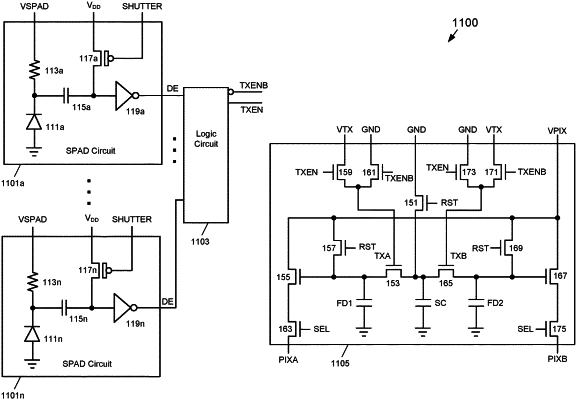| CPC G01S 17/10 (2013.01) [G01S 7/4863 (2013.01); G01S 7/4865 (2013.01); G01S 17/89 (2013.01); G01S 17/894 (2020.01)] | 20 Claims |

|
1. A differential time-to-charge converter (DTCC) circuit, comprising:
a capacitive device;
a first transistor configured to transfer a first charge on the capacitive device to a first floating diffusion in response to a first enable signal that is active at a beginning of a shutter signal and is inactive in response to a detection event that detects one or more photons that have been reflected from an object;
a second transistor configured to transfer a remaining charge on the capacitive device to a second floating diffusion in response to a second enable signal that is active in response to the detection event of the one or more photons and is inactive in response to an end of the shutter signal; and
an output circuit configured to output a first voltage that is based on the first charge on the first floating diffusion and a second voltage that is based on the remaining charge on the second floating diffusion, a first ratio of the first voltage to a sum of the first voltage and the second voltage being proportional to a time of flight of the one or more photons detected by the detection event, and a second ratio of the second voltage to the sum of the first voltage and the second voltage being proportional to the time of flight of the one or more photons detected by the detection event.
|